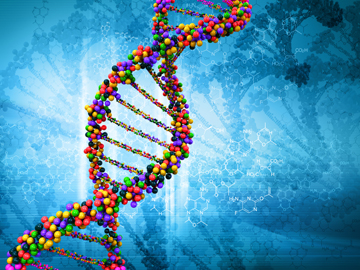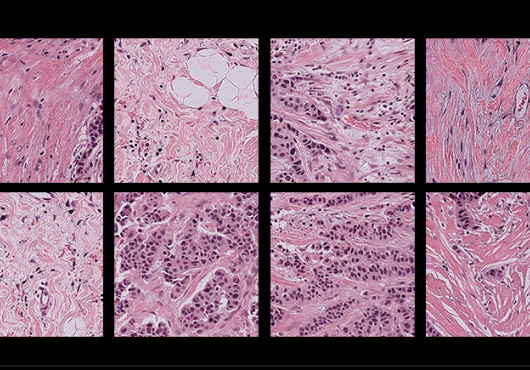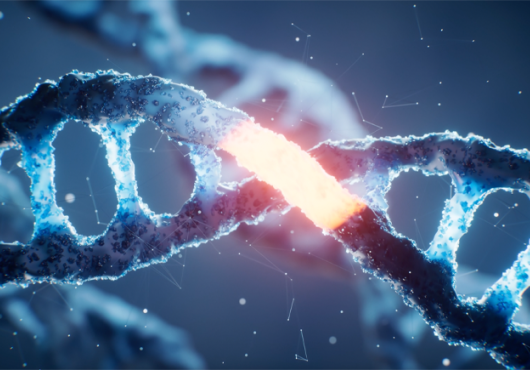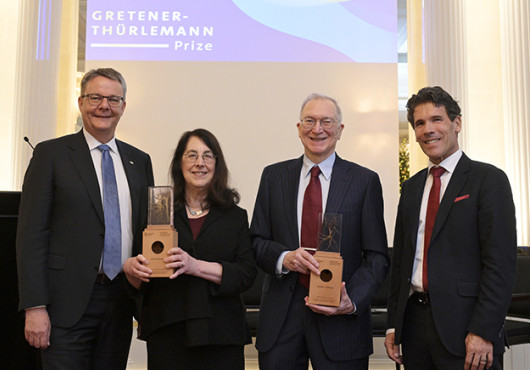New research may soon enable doctors to determine which patients with high-grade serous ovarian cancer (HGSOC)—the most common cancer of the ovary—are likeliest to benefit from a certain class of drugs.
A team led by HMS researchers at the Dana-Farber Cancer Institute used technology able to pick out abnormalities in single units of the genetic code in order to sort tumor samples from HGSOC patients into three subtypes based on the extent of a particular kind of genetic damage within the cells.

Patients in the subtype with the highest levels of damage—representing one-third to one-half of all HGSOC patients—were the slowest to develop resistance to platinum chemotherapy treatment such as carboplatin. Overall, these patients lived longer without having their disease worsen than more did patients in the two other groups.
“Our findings suggest that, for the first time, we can determine which patients have the best chance of responding to specific categories of drugs for high-grade serous ovarian cancer,” said Ursula Matulonis, HMS associate professor of medicine at Dana-Farber and a senior author of the study. “For this disease, one of the most difficult to treat of all gynecologic cancers, the study is an important step forward.” The findings were published online by the journal Clinical Cancer Research.
J. Dirk Iglehart, HMS Anne E. Dyson Professor in Women’s Cancers at Dana-Farber and Brigham and Women’s Hospital, is the paper’s other senior author. Zhigang Wang, HMS assistant professor of surgery at Dana-Farber, is the first author.
Cancer genetics research
HGSOC cells have a high degree of genomic instability, their nuclei littered with large numbers of extra or missing chromosomes or chromosome fragments. One of the consequences of this havoc is a process known as loss of heterozygosity (LOH). LOH occurs in cells that lack the usual complement of two normal copies of each gene, having instead a normal and mutant copy of certain genes. When the normal gene in these mismatched pairs becomes inactive or mutated, the cell has no normal copy of the gene left – and is said to have lost heterozygosity.
In the study, investigators used single nucleotide polymorphism (SNP) arrays—which read the elements of the genetic code one by one—to probe HGSOC tissue samples for instances of LOH. The samples tested fell neatly into three groups based on the patterns of LOH within them.
One of these groups was distinguished by a high level of LOH and a deleted segment of chromosome 13. When researchers reviewed the medical records of patients in this group, they found the patients were slow to develop resistance to chemotherapy drugs.
“Patients with the greatest burden of LOH had the longest progression-free survival – the period of time after treatment when their disease is not advancing,” Wang said. “This is the group which stands to derive the most from treatment with certain classes of drugs.”
Potential cancer treatment
LOH hampers cancer cells’ ability to survive, rendering the cells particularly dependent on proteins that repair damaged chromosomes. Drugs that target those repair proteins, including a class of agents known as PARP inhibitors, may be especially effective against HGSOC cells with high levels of LOH, the study authors assert.
The authors also found that LOH patterns in HGSOC were similar to those in triple-negative breast cancer, a form of breast cancer also characterized by a high level of chromosomal instability. The discovery suggests that agents effective in treating HGSOC might be effective against this type of breast cancer as well, the authors claim.
The study’s other authors include additional researchers from Dana-Farber and Brigham and Women’s and from the Technical University of Denmark; the University of Melbourne, Australia; the University of Bergen, Norway; and the University of Sydney, Australia.
Principal funding for the study was provided by the Breast Cancer Foundation.
Adapted from a Dana Farber Cancer Institute news release.


